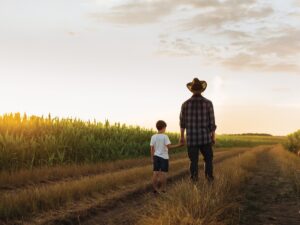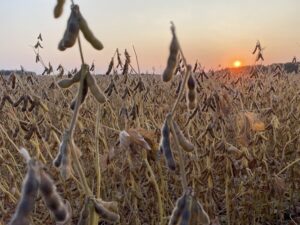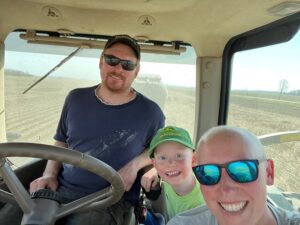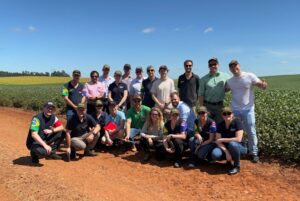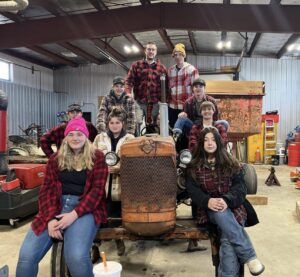The innovators
FINDING THE RIGHT FIT
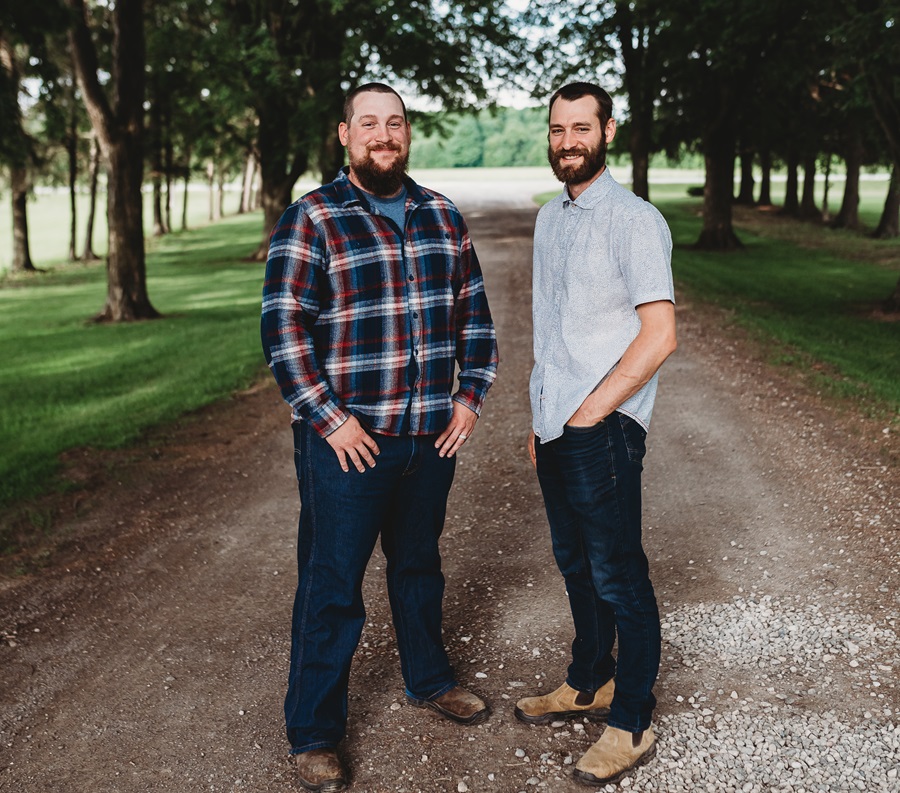
EVERY WINTER DURING THE MEETING SEASON, THE WORD “INNOVATION” IS MENTIONED — OFTEN WITH GREAT ENTHUSIASM. It may result from a previously untried processing opportunity, a seldom- grown cropping alternative, or a transition to something completely different, like adding livestock to a grain and oilseed operation.
Although there’s no age limit governing such entrepreneurial spirit, anecdotally, there does seem to be a greater willingness for “something different” among younger producers. Their goals range from doing something positive for the environment to charting a new value-added venture for their farm. Or they find a market opportunity that doesn’t exist in their particular area — or a little of all three.
One thing about the search for differentiation is that it seldom comes without plenty of planning, discussions with those experienced with such ventures, and a learning curve that tends to be more of a straight line upward. Yet, two elements that tie them together are the determination to make their new endeavour successful and the patience to endure subsequent growing pains.
Here are the stories behind three innovative operations, all managed by young producers.
WHAT’S ‘IN STORE’ ON THIS FARM
Innovating on the farm usually involves answering to the local marketplace, filling an opportunity that’s often unattended. The McNaughtons have transformed Proof Line Farm, a generational operation, into a value-added venture. They’ve complemented their farming history with an on-site farm market that sells dairy products, eggs, local meat, and a wide variety of food items from other ventures, including honey and maple syrup.
“We have a small dairy and work some additional cash crop acres, with a corn- soybean-wheat-alfalfa rotation on the home farm and a corn-soybean-wheat rotation for everything else,” says Steve McNaughton. He and his wife, Janan and his brother, Mike, operate the farm alongside their father, Norm, with help from extended family members, including their grandmother, Katherine. “We also grow a bit of sweet corn, pumpkin and sunflowers and have some dairy-beef cross cattle as well as a handful of laying hens, all to supply our farm store.”
In the past couple of years, they’ve tried to focus more on their soils, adding cover crops following wheat and switching to strip-till for corn and no-till for all other crops.
Steve and Mike are the sixth generation to work on the family farm, with the creamery and farm market part of its transition. Mike began farming with Norm after returning home from college in 2011; he gradually took over management of the dairy operation following the construction of their new free-stall barn and milking robot in 2018.
“Janan and I have been working on the creamery and farm market concept since 2019,” says Steve, crediting Norm with succeeding in the operation the way he did. “He expected well-thought-out and thoroughly researched business plans and has been very supportive of the changes we’ve made in the past few years. He’s provided us with the opportunity to expand, and he’s been patient with us when we’ve made mistakes and learned along the way.” The technological changes they’ve made include a GEA Monobox milking robot that Steve calls a pivotal part of the dairy, offering flexibility and data that are invaluable, plus a robotic feed pusher running every two hours to keep feed in front of the cows. The laying hens are kept in a Cackellac chicken tractor in warmer weather, allowing them to be safely and securely housed on pasture and moved on to new grass daily. With their expansion, efficiency is paramount: each task needs to be accomplished quickly and easily on a daily basis.
With the store, Janan is kept busy vetting suppliers and trying various products. Working with local people is important but so too is their focus on offering the highest quality goods from consistent and reliable suppliers. Their cousins produce the maple syrup they sell, and there is a couple that maintains an expanding apiary on the McNaughton farm to supply them with honey.
Steve acknowledges the need to be multifaceted to operate any farm and that he, Janan, and Mike each possess a diverse yet complementary skill set suited to their current operation. Mike is hands-on and has a practical approach, and Janan is strongest in formulating customers’ experiences, relationship management, and marketing the business. Steve’s strengths lean to the food-processing side, together with planning and crunching numbers.
“The skill set necessary to add a consumer- facing aspect to your farm is definitely different from being strictly production- focused,” says Steve. “You have to keep consistent retail hours and respond to the evolving needs and desires of your customers. We’re more implementers than innovators; we just try to piece together things we think will work well for us here on our farm.”
AN ORGANIC APPROACH
Farming is hard enough, dealing with the vagaries of weather and the volatility of commodity prices. But making the decision to undergo organic certification — and not just in crops but in livestock, as well — further complicates life as a producer. Yet that is exactly what Brett Israel, his father Jamie, and grandfather Carl have embraced in the past eight years. The family-run farm has been certified organic since 2019 in their crops and with their 170-sow, farrow-to-finish operation.
Brett acknowledges the effort involved in “going organic”; he never tries to convince others that it’s the only way to go, yet he does field a significant number of questions about his family’s methods and goals. The transition has yielded numerous benefits, from premiums resulting in the added management requirements to improved soil conditions and animal health. They’ve checked their land base at 800 to 900 acres, and if they expand on those acres, it’s a gradual process that reflects their organic requirements.
“If we have an opportunity to grow in our land, we’re going to take that opportunity and look to grow it modestly — nothing too fast,” says Brett, who rotates corn, soybeans, and winter wheat, spring barley or mixed grains. “I don’t want to overproduce for a given market, either. That’s an important component, where growth hasn’t been excessive, and it’s more about improving profitability per acre if we can.”
Two additions to the crop rotations are alfalfa and cereal rye as a cover crop. They’re seeing better weed control in subsequent crops, plus higher corn and soybean yields following alfalfa. The feed quality for their hogs is showing positive results, which Brett notes is a return to past practices, such as when his grandparents fed alfalfa haylage to their sows in the 1960s and ’70s.
Incorporating cereal rye as a cover has also helped with weed control and boosted soybean yields.
“We started looking at ways to get more cereals into the system going back to 2022, and we’re actually now starting to drill through a rye cover after some of our grain corn gets harvested in October,” says Brett. “We have two years where we’ve seen that work quite nicely in terms of overwintering, even though it’s established later in the fall.”
A common thread among innovators is in bridging the gap between farm and consumer, and that’s certainly part of the approach the Israel operation has taken, particularly in listening to the needs and wants of the average non-farmer. Brett believes he’s tapped into a preferred production system for the farm’s hog operation, including loose housing for the animals. Together with organic feed, it’s translated into improved animal health, both in terms of average daily gain and feed conversion and lower mortality rates.
“We’ve had the opportunity to network and share with others, and that’s always fortunate,” says Brett. “It’s encouraging more producers who are building new to be thinking about housing and maybe building something that could be standards that are evolving, going forward. It’s certainly led us to the position that even if we weren’t going to be supplying a certified organic marketplace, I wouldn’t want to raise pigs the way we used to raise them.”
When asked if he considers himself an innovator, Brett replies that he’s just a humble observer of a process and that he’s trying to carry forward a legacy of asking questions in search of greater understanding. If that can help others find their way to a better system, all the better.
COVER CROPS AND SO MUCH MORE
Looking at a map of Ontario, it’s easy to lose sight of the scope of agriculture across such a huge expanse with different production practices. In the Ottawa Valley, it’s possible to depart from corn or winter wheat while attending to malt barley or hemp. That’s what Keanan and Reuben Stone have found, along with developing Valley Bio, between Ottawa and Pembroke.
The farm has evolved in the past 15 years, building a registered seed establishment on 800 to 1,000 acres of owned and rented land, a variety of 30 cover crop species and UniSeeds, a hemp genetics business they started in 2012. The Stones are also SeCan growers and dealers, with soybean and cereal seed from genetics suited to their specific region.
The two, along with Reuben’s father Dalton, run a three- to five-year rotation with the main crops being industrial hemp, soybeans and cereals, including rye, barley, and oats. They also add peas and buckwheat and try to follow most crops with a cover, depending on the goal, be it soil health, forage for livestock or returning nutrients to a field.
“We want to make a difference in the agriculture industry,” says Keanan. “We want to ensure the sustainability of our farm for our family or future generations that will farm this land, so focusing on soil health and sustainability is a big driver. Working with traditional commodities offers some stability but the market’s so saturated it’s difficult to add much value or generate much profit, so we diversify.”
Reuben adds they can ship a container of hemp almost anywhere in the world for the same percentage margin as a truckload of corn to the Port of Johnstown, roughly 200 kilometres away. They do that by adding value to the hemp and most of the other crops they grow, producing them with the goal of being seed, which is then conditioned and packaged in their registered seed establishment.
The variety of cover crops includes traditional options like rye, oats, barley, buckwheat, and clovers, but Reuben’s been experimenting with common vetch and yellow sweet clover for the past couple of years. He’s also spent time working with growers on cover crop strategies, attempting to add diversity in some fields or introducing cattle forage. Among the other cover crop species they sell are flax, sorghum, sunflower, phacelia, peas, radish, and turnip.
If working with hemp and an extensive list of cover crops weren’t enough in terms of innovating, Reuben began working with a drone in 2023 after watching them for several years as they evolve for farming purposes. He’s seen enough success that he is convinced the technology has a permanent place on their farm.
“We’re investing heavily in the logistics to support that equipment and make it even better,” he says, noting he can use it for seeding and fertilizing crops. “It’s our next tractor, but it does add another layer of complexity to a farming operation and certainly has to be taken seriously.”
Reuben and Dalton are building a custom trailer to improve the logistics for seeding with the drone, and they’re hoping to put it on the road this summer.
“Reuben is the innovator in our team – he can’t help it,” says Keanan. “Sometimes it’s hard to rein him in, but it’s also fun to run with him on some of his ideas and projects because they’re exciting and they keep things interesting.” •






